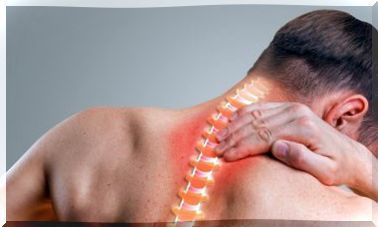All About Narcolepsy, The Need To Sleep
Science does not know the reasons why narcolepsy occurs and so far there is no cure for this disease

Narcolepsy is a neurological condition, which is also known as “Gelineau Syndrome”.
It is characterized because the affected person experiences uncontrollable bouts of sleep during the day. Its prevalence in the world is very low: it is estimated that 0.16% of the population suffers from this problem.
The disease appears to have an autoimmune origin. Its main effect is to prevent the brain from properly regulating sleep and wake cycles. People feel fleeting urges to sleep, while awake.
When these are uncontrollable, they sleep for a few seconds or minutes. Only in rare cases does this rest last for more than an hour.
Sleep episodes caused by narcolepsy can occur at any time. For that reason, this disease is very disabling since the person can fall asleep in work situations, on the street, or while driving, for example.
Those who suffer from narcolepsy do not sleep more than normal, but rather do so abnormally.
Causes of narcolepsy

Science has not yet established the exact causes of narcolepsy. However, during the last decades important studies have been carried out to understand this rare condition. Researchers have been able to determine that there are several areas of the brain involved in this disease.
Likewise, it has been established that the brains of people with narcolepsy have a reduced number of hypocretin-producing neurons. This substance regulates sleep, but also food.
That fact could also explain why most people with narcolepsy also have higher rates of obesity.
Narcolepsy is presumed to be caused by a failure of the immune system. Likewise, it can be due to traumatic injuries, tumors or other diseases in the brain. Some infections or exposure to toxins could also be the cause of this disease.
Main symptoms of narcolepsy

The usual is that the first symptoms of narcolepsy appear between 15 and 30 years of age. Such symptoms have a certain severity. The main ones are:
- Excessive sleepiness during the day. It is the main symptom. Sometimes the drowsiness occurs progressively and other times suddenly. They occur daily, although not constantly.
- Muscle hypotonia crisis. It is also one of the typical symptoms of narcolepsy. Sudden episodes of decrease in muscle tone, which occur in the face of strong emotions. Muscles become weak, sometimes mildly and sometimes severely. They last seconds or minutes.
- Sleep paralysis. It consists of the inability to move, before falling asleep or shortly before waking up. They are almost always accompanied by hallucinations.
- Hypnagogic / hypnopompic hallucinations. Unreal perceptions are present, either visual, auditory or tactile. They mainly happen when falling asleep or waking up.
- Fragmented dream. It means waking up during the night, repeatedly. It is usual that there are also nightmares or parasomnias, sleepwalking, psychomotor agitation during sleep and rapid eye movements before time, among others.
Other frequent symptoms in narcolepsy are: automatic unconscious behaviors, or automatisms, lack of concentration, subjective sensation of memory loss, tiredness, fatigue, blurred vision, mood disorders and eating disorders.
Diagnosis and prognosis

The diagnosis of narcolpsis is typically made on the basis of the presence of a so-called “narcoleptic tetrad.” This includes: excessive daytime sleepiness, muscle hypotonia or cataplexy, hypnagogic and hypnopompic hallucinations, and sleep paralysis.
The usual thing is that it is not diagnosed until 10 or 15 years after the appearance of the first symptoms.
Diagnosis usually begins with a clinical evaluation and a medical history inquiry. None of the symptoms of narcolepsy is unique to this disease and this adds an additional difficulty.
For this reason, narcolepsy is rarely diagnosed solely on the basis of symptoms. Typically, two basic tests are ordered: the polysomnogram (PSG) and the multiple sleep latency test (MSLT).
The ECG, which measures the electrical activity of the heart, and the EEG, which measures the electrical activity of the brain, are also frequently used. Narcolepsy is an incurable disease that, however, can be controlled with proper treatment.
On its own, this disease does not cause complications beyond the risks of falling asleep during daily activities.









